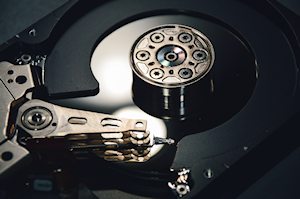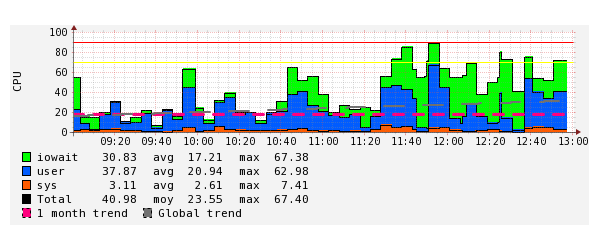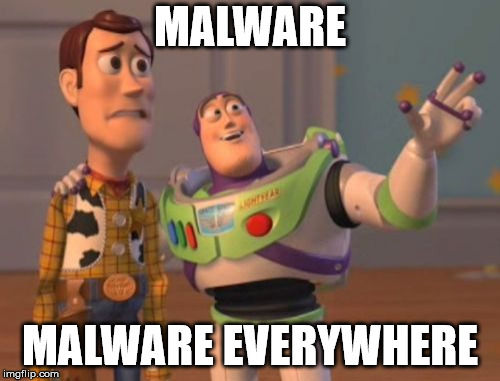Common Server Problems and How to Avoid Them
Servers are a very common program or device, used in computing, that provide functionality that client programs or devices use; this common computational model is known as the client-server model. Servers provide a variety of services or functionalities, allowing clients to share data and resources. Servers are highly functional as they can service multiple clients at a time or a single client can connect to multiple different servers. Due to the nature of servers and the services they provide, avoiding server problems is essential for anyone running a server or managing servers.
1. Slow Page Loads
One of the main complaints any user may have is slow page load times when servers take too long to respond, or content is otherwise delayed. There are a variety of ways that slow page load times can negatively impact the client.
Delays with site processing speeds and website performance can have an adverse impact on the shopping behavior of customers. Akamai, a popular content delivery network service, conducted a survey that showed 40% of users would abandon a website if it takes more than three seconds to load. Although three seconds does not sound like much, the current high availability and reliability of online services make clients unwilling to wait for long.
Additionally, Google conducted a review of how search engine optimization (SEO) occurs and how different concepts ranked in 2009, and this showed that page speed is considered a ranking signal for SEO. According to HubSpot, a well-known inbound marketing and sales platform, considers optimal load speeds to be less than 1.5 seconds.
When considering page loading speed, Kissmetric has reported that a one second delay when loading a page can result in a conversion reduction of 7%. Page load times will only continue to grow in importance as Google continues to focus on mobile page speed into the summer of 2018.
Optimizing page loading speeds is essential, and there are ways to optimize the servers and the content to enhance page loads.
Checking the server’s latency is one important metric to monitor. Latency is considered the distance between the server and the client or end-user, and optimal response time is considered less than 200ms. One tool that can help test latency is pingdom, which helps find load times and speed bottlenecks. Another option to help facilitate page load speeds is using a content delivery network (CDN) like Cloudflare to help distribute content to clients with high performance and availability.
It’s also important to optimize content to reduce server problems. Content can be minified, which helps reduce whitespace, combines files, and optimizes or shortens some basic programming patterns to make the website run faster. Additionally, images can be compressed with a “lossless” image compression program like Gimp, which means that the original data can be entirely constructed from the compressed data.
Using 301 redirects can be recommended for SEO, especially when the page location has moved. However, the more redirects involved for the client, the longer the page load times. Browser caching is another commonly used technique to optimize page loads, especially for repeat visitors. Browser caching works by storing resource-related files, such as images, CSS, or other resources on the local computer; this caching reduces the page load requirements.
2. Hardware Failure
Hardware failure is another common server problem that can create headaches for the server administrators and the connecting clients. According to surveys conducted on 400 StorageCraft partners, 99% of those that responded have experienced a hardware failure. Of those, almost 81% of those responses were related to a hard drive failure.
Server age is another concern that can lead to hardware failures. Statistically, servers that range from five to seven years in age have an almost 50% failure rate.
Mitigating hardware failure can be simple since hardware can be enhanced, maintained, and otherwise monitored. One way to reduce hardware risk is by choosing a managed hosting provider, which can help by conducting spot checks, preventative withdrawal, and hardware monitoring. Each of these functions helps to ensure that server hardware is maintained and kept in good health.

Additionally, designing the network of servers used to take redundancy, storage, and traffic into account is essential. Servers are designed to reroute traffic when a server is defective or non-responsive, so using specialists that understand server setup and networking is necessary to ensure high availability and redundancy; specialists can also help determine the right balance between cost and risk for an administration.
3. Viruses, Malwares and Cyber-attacks
Viruses, malwares, and cyber-attacks have grown into a significant threat to servers, websites, and other internet resources.
Viruses or malware are pieces of malicious software that are geared towards exploiting vulnerabilities in existing hardware or software. Malware can cause websites to run slower, browsers to perform actions that the user did not approve, or servers to be overloaded with requests due to page issues. Cyber-attacks can take a variety of forms, such as the commonly used distributed denial-of-service (DDoS) attack.
DDoS attacks can cause server problems by interrupting the flow of legitimate traffic with a flow of illicit traffic; this can overwhelm the servers. The illicit traffic can also block legitimate traffic from reaching its destination, causing users to become frustrated with their inability to access the resource. DDoS attacks have targeted large hosting providers like OVH in 2016 and DynDNS that same year. If you’re interested in seeing real time data on top daily DDoS attacks worldwide, visit Digital Attack Map.
Mitigating these types of risks starts with downloading trusted software solutions only, avoiding untested or untrustworthy solutions or source locations. When solutions are endorsed by a reputable community or are provided open-source, they can be considered more trustworthy than unverified solutions.
Additionally, creating a backup of the server is essential. Backups allow the server to be rolled back to a previous state if necessary, especially if a compromising event occurs. Using plugins that have a recent update and a stable update are essential since this means the plugin is being monitored and developed currently.
Content management systems (CMS), like WordPress, should be updated when necessary, especially when multiple clients rely on the system. CMS is often used to create, edit, publish, or otherwise manage content for users on websites. This means updates are essential to ensure any bugs are fixed, or exploits are patched to avoid issues with the system.
Any website that uses forms should employ captcha services to avoid form exploitation; some forms can be used to gain access to systems that are otherwise off limits. Forms that utilize SQL databases, for instance, can be victims of SQL injection attacks, which may allow users to gain access to admin functions or site commands that are otherwise not accessible.
4. Overload
Server overload is another server problem that can be an unexpected burden, especially when site traffic starts to increase. An increase in traffic to any website or server can create a drain on the resources, especially when the server has a finite amount of resources. When overload issues start occurring, this usually means that server resources like the CPU, RAM, or bandwidth are being pushed to their limit.
Mitigating this type of problem can happen with enhancing the hardware used for the server. Similar to upgrading a computer or mobile device after a few years, upgrading to newer hardware and properly balancing your server load can mitigate the risk of overload. Additionally, forming a server cluster and managing server load through balancing can help reduce the potential for overload. Two servers sharing the balance of traffic or client requests can accomplish what one server alone would fail to perform.

Conclusion
Server problems can be a temporary nuisance or a real administrative problem, but solving these problems is essential for managing the server-client relationship. Slow page loads can lead to client upset and a reduction in client conversions or returns, hardware failure can lead to excessive downtime, viruses and cyber-attacks can take servers and sites offline, and overload can cause stability and performance problems. However, the mitigation steps discussed can help reduce the potential for server problems and help server administrators manage their resources more efficiently.

 Call us at 1-888-GTCOMM1
Call us at 1-888-GTCOMM1





